The EU’s Council and Parliament have reached a provisional agreement on revisions to the EU Emissions Trading System (EU ETS) rules applying to the aviation sector. A proposal by the Parliament, and backed by environmental groups and major European low-cost airlines, to include all international flights departing the European Economic Area (EEA) within the EU ETS was blocked by the Council, which represents EU member states. As a result of the trilogue talks, the EU ETS will apply only for intra-European flights – including departing flights to the UK and Switzerland – while ICAO’s CORSIA will apply to extra-European flights to and from third countries participating in the global scheme from 2022 to 2027. The two institutions agreed that after the next ICAO Assembly in 2025, the Commission will assess if CORSIA implementation is sufficient to reduce aviation emissions in line with Paris climate objectives. The co-legislators also agreed to fully phase out free emission allowances for aircraft operators between 2024 and 2026 but also set aside 20 million free allowances to incentivise the uptake of eligible SAF and to transfer 5 million allowances to an innovation fund. The agreement, which also addresses non-CO2 effects for the first time, has been both welcomed and criticised by the European airline sector.
Revisions to the Aviation EU ETS were first proposed by the European Commission in July 2021 as part of its ‘Fit for 55’ package to reduce overall EU emissions by at least 55% by 2030 compared to 1990 levels and to achieve climate neutrality in 2050. EU member states and the Commission have shown strong support for CORSIA, which was considered necessary to secure international backing for an agreement to adopt the Long-Term Aspirational Goal (LTAG) at the ICAO Assembly in October. The inclusion of emissions from extra-European flights into the EU ETS also risked confrontation with third countries, including the United States, which has legislation in place to prohibit US airlines from compliance with the EU scheme. An agreement was also reached at ICAO during the Assembly to strengthen the CORSIA baseline, despite initial opposition from the airline industry not to change the baseline that had been altered during Covid-19 to help airlines deal with the added financial burden of CORSIA offsetting compliance.
However, CORSIA is criticised as an ineffective scheme by environmental groups and others, who do not see it in step with the Paris Agreement 1.5C climate target and the net zero by 2050 goal for aviation emissions adopted by both ICAO and the industry. Under the scheme’s rules, it will not be reviewed again until 2025.
European NGO Transport & Environment said the failure to include long-haul flights in the EU ETS would result in 58% of Europe’s aviation emissions being unaccounted for and accused EU governments of cowardice. The trilogue outcome would also make international aviation one of the only sectors of the EU economy that will not fall under an emissions cap, it added.
“EU governments lacked the grit to push through a deal that was good for the climate and social justice,” said Jo Dardenne, Aviation Director at T&E. “Average European families will continue to pay much more for their CO2 emissions than frequent long-haul flyers. We are about to see another lost decade of climate inaction.”
Low-cost airline Ryanair, Europe’s biggest carrier, also condemned the decision not to include departing international flights in the EU ETS, which it blamed on the Commission.
“The Commission’s failure to support the Parliament vote means that Europe’s most polluting flights – long-haul and transfer passengers – that create the majority of EU aviation emissions, will continue to be exempt from paying their fair share of ETS taxes,” commented Ryanair CEO Michael O’Leary. “While the richest Americans, Europeans and Asians on long-haul flights pay zero environmental taxes, Europe’s most price sensitive passengers and their families travelling on short-haul flights, many to peripheral member states and who have no alternative to flying, are forced to pay all of Europe’s ETS taxes, while they generate less than half of EU aviation emissions. This is clearly unfair.”
In actual fact, when emissions from flights to and from outside the EEA reach levels above 85% of 2019 levels (the revised baseline agreed at the ICAO Assembly), they will have to be offset with corresponding eligible carbon credits purchased by the flight operator to be invested in emissions reduction projects. Of ICAO’s 193 members states, 118 have agreed to participate in the voluntary pilot and first phases (2021-2026) of CORSIA. Major aviation players China and India have yet to join though, so flight emissions between the two countries and the EEA will not be covered by CORSIA during this period.
After the next ICAO Assembly in 2025, the Commission will carry out an assessment of CORSIA as to whether it is meeting the objectives of the Paris Agreement. If it is then the Commission will make a proposal to the Council and Parliament to extend the “clean cut” between the two schemes. If deemed insufficient, the Commission says it will make a proposal to extend the scope of the EU ETS to all flights departing from the EEA.
“The deal reached on the scope of the ETS shows that work towards an effective global carbon price for aviation has only started,” said a statement from trade association Airlines for Europe (A4E), whose members include both low-cost and long-haul airlines. “This will build on the outcome of the ICAO Assembly in October. We must not forget that airlines have been paying for their emissions through the EU ETS since 2012. The cost of compliance for the ETS is likely to have increased five times in size by 2025 to over €5 billion ($5.3bn) annually.”
A4E expects the annual cost of compliance to both the EU ETS and CORSIA schemes to rise from €0.95 billion in 2019 to €7.6 billion in 2030 and €9 billion by 2035.
Another conflicting position between the Council and Parliament was over the phasing out of the free allowances granted annually to aircraft operators under the EU ETS. The Commission proposed all free emission allowances be phased out by 2027, to be replaced by full auctioning of allowances, a position backed by the Council. Parliament, on the other hand, voted for a faster phase out by 2025. The trilogue produced a compromise of 2026, a year earlier than proposed, with a phase-out of 25% in 2024 and 50% in 2025.
“A4E is extremely disappointed about the decision to phase out by 2026 free ETS allowances currently granted to airlines,” said the A4E statement. “This is well before truly effective decarbonisation solutions will be available at the scale needed for them to be effective.”
On the other hand, A4E welcomed an agreement on a new system of sustainable aviation fuel allowances under the EU ETS to help stimulate the deployment of SAF and also the transfer of 5 million allowances from the aviation sector to the EU’s Innovation Fund, which uses EU ETS revenues to support innovative low-carbon technologies.
The co-legislators also agreed to set aside 20 million free allowances to further incentivise the uptake of fuels that are deemed to be in the short-term a promising path for aviation decarbonisation by aiming to bridge the price gap with conventional jet fuel. All fuels eligible under ReFuelEU, except those derived from fossil fuels, will be eligible for the SAF allowances under a mechanism to be in place until 2030. Small islands, small airports and outermost regions will be able to cover the price differential between kerosene and eligible fuels with 100% of the SAF allowances in order to ensure the availability of the eligible fuels in these locations with specific supply constraints.
For all other airports, the coverage of the price differential will differ according to the type of fuel: 95% for renewable fuels of non-biological origin (RFNBOs); 70% for advanced biofuels; and 50% for other eligible fuels.
The agreement also provides for the implementation of a monitoring, reporting and verification (MRV) system for non-CO2 effects in aviation from 2025. By 2027, the Commission is required to submit a report based on the MRV and by 2028, after an impact assessment, the Commission will make a proposal to address non-CO2 effects.
“I’m glad that we have found an agreement that effectively paves the way for meeting our objective of reducing transport emissions by 90% by 2050,” said Marian Jurečka, the Czech Minister of the Environment, which currently holds the EU presidency. “It will allow us to address aviation emissions within the EU but also outside by appropriately aligning the EU ETS with CORSIA and to ensure that all airlines operating flights on the same routes are treated equally.”
The provisional agreement now requires formal adoption by the Council and the Parliament.
Meanwhile, the UK has signed a Memorandum of Understanding with Switzerland that states the UK’s intention to include flights from the UK to Switzerland in the UK ETS “as comprehensively as possible” by 1 January 2023. The UK ETS, which replaced the UK’s participation in the EU ETS on 1 January 2021, covers domestic flights, flights between the UK and Gibraltar, and flights to the EEA. It is likely the UK will mirror the EU Council and Parliament agreement to apply CORSIA to all other countries that have joined the ICAO scheme.


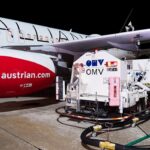
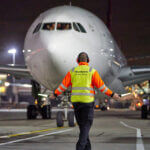
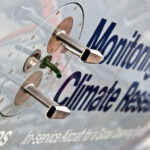



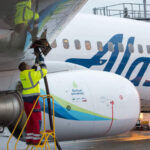
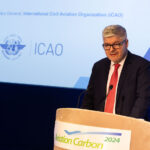



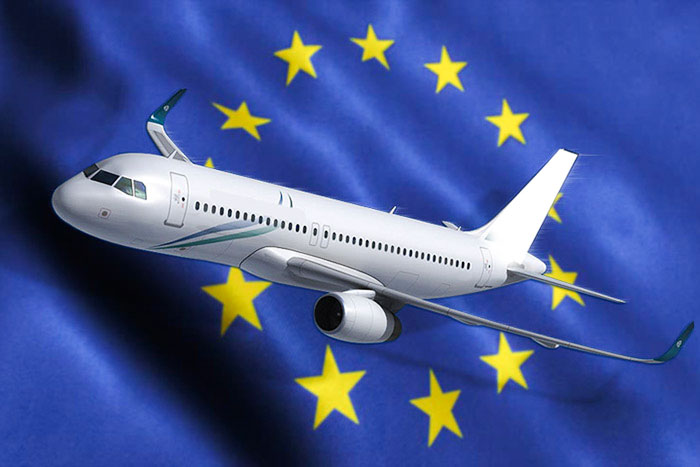

More News & Features
UK government sets out new Jet Zero focus and launches consultation on CORSIA global emissions scheme
New study highlights differing strategies and barriers to decarbonising aviation in UK and Europe
European aviation players launch Project SkyPower to drive investment in e-SAF and meet EU and UK mandates
Cambridge report sets four goals to be implemented by 2030 for global aviation to reach Net Zero
Novel catalyst pioneer OXCCU launches first-of-a-kind PtL SAF demonstration facility
Lufthansa Group introduces environmental surcharge to cover SAF and emissions regulations